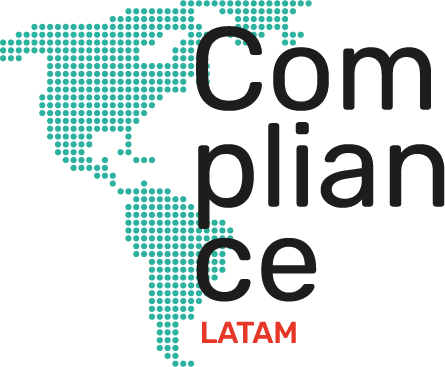
11-03-2024 | Noticias-en, Opinions
Strategic litigation, also called impact litigation, is a tool whose use is increasingly frequent and that helps achieve gender equity. It is important to understand what it is and what its scope is, to encourage its use in the future and continue developing advances in this matter.
For some time now, but particularly in recent decades, society has begun to care about achieving gender equality. This concern has been presented to politicians, leaders and governments in many ways, but particularly through demonstrations. It is true that civil society has been one of the great drivers of this impulse, but the work of organizations that have equity as an end in themselves must also be recognized.
These organizations have been fundamental in promoting public policies so that governments establish the foundations to eliminate inequality and provide equal opportunities to all.
However, it is common for governments, and particularly legislative powers, to not fully understand the requests that society makes on these issues. This can often happen due to machismo or even lack of vision to understand that a problem exists. This is not surprising, given that congresses are representatives of societies; These same societies suffer from the same problems, and that, in the best of cases, are just beginning their deconstruction processes.
That is why public policies that do not comply with international equity standards have been legally controversial, either because their purpose is not well understood or because the way these policies are applied does not contribute to achieving the objective of equity.
This is where strategic litigation comes in as a way that opens avenues of protection through the use of judicial tools. Strategic litigation represents the person with a particular situation and common requests from minority groups, which perfectly exemplify problems in laws and policies that could not otherwise be understood.
To demonstrate that a law is incorrect, develop a trial and challenge the norm that was applied to a specific case with specific circumstances and people, it will always be much easier than warning of its unconstitutionality in an abstract way.
In Mexico, and in the rest of the world, important precedents have been established in this matter, such as, for example, in criminal matters, the right for a woman not to be punished for performing an abortion.
Also, it was through a series of trials that differences between men and women in labor matters were reduced. This included cases where it was prohibited to fire pregnant women, questioning the policy that only provided daycare services to working women, but not to working men; endorsing the idea that, if a man worked, he did not need that benefit because surely his wife would not work and take care of the children.
In addition, the possibility of recognizing home work with the same rights as any other was opened. This allowed the establishment of pensions for women who remained in charge of the home while their husband worked, and also generated a social security system for domestic workers that allows them to enjoy benefits on a par with any job.
In administrative matters, it is important to highlight the interpretations of the scope of reparation for victims by state bodies, including the acceptance of responsibility, which has often led directly to modifying public policies and discriminatory legislation.
These matters have not only provided benefits to the people who promote such lawsuits, but they also generate precedents that can be applied by lower or local courts in similar matters, and in some cases they have even managed to boost the interest in carrying out legislative reforms and even constitutional ones to establish rights and their scope and the way in which governments should respond to the problems that women face.
These changes are fundamental, and although they are not rapid, they end up influencing society and individuals in the long term, thus causing societies to modify their rules in favor of equity.
Within the framework of Women’s Day, it is necessary to highlight and remember these types of tools, as well as celebrate the lawyers who, generally on a pro bono basis , seek the creation of equal opportunities and the end of gender-based violence. through the defense of affected people. The same with the organizations that give meaning to law and public policies every day so that they have better access to justice.
Last but not least, it is necessary to recognize the judges who, with progressive vision and often with considerable courage, provide the cases with the emblematic sentences that are celebrated on days like today.
.jpeg)
By, Diana Rangel León, Bashan, Ringe and Correa Counselor.

08-03-2024 | Noticias-en, Opinions
“As women, we must stand up for ourselves. We must defend each other. We must defend justice for all.” –Michelle Obama
Understanding that sisterhood is the relationship of solidarity between women, especially in the fight for their empowerment, from a practical and application point of view, it is difficult to determine which are the most effective practices and with the greatest impact that we can implement to achieve support. to other women in this fight for empowerment.
For this reason, and based on my personal experiences and that of some other legal professionals, below are some recommended practices to encourage the practice of sisterhood effectively among legal professionals.
1. Don’t judge and honor other women’s stories.
On many occasions we tend to judge and/or minimize the experiences of other women, and each woman has a story that has led her to be what she is, it is an accumulation of experiences that has resulted in the forging of character. By honoring her stories, we learn from experiences that enrich our own perspective; while by not judging we create an environment of trust, in which the support network will be genuine and free of prejudice. Even though we are all women, and we have all been discriminated against; We have not been in the same way since the intersectionality that certain attributes give us such as privilege, absence of it, social class, sexual preference, ethnicity, age, among others, greatly differentiate the experiences between one and the other.
2. Avoid toxic criticism of another woman.
This does not mean always agreeing with another woman, however, we must avoid falling into toxic criticism that is versed in gender prejudices. Carrying out objective and constructive criticism, which provides learning and improvements to another woman, is very different; to fall into the use of appellations to the personality of this one of hers. And, while it is true that women are not perfect, it is also true that we are judged by a much more demanding standard than men. A direct woman can be classified as “bossy”, while a direct man is classified as a “leader”. Using adjectives like “crazy”, “bitch”, “angry” or even referring to a woman’s menstrual cycle, physique or sexual life adds toxicity to any criticism.
3. Stop gossiping about another woman.
Being a professional woman is very difficult, and even though the tendency is not to care about “what people will say”, in the working world it is very common to hear gossip about women; about their love life or choice of partner, their conditions as a mother, or if they are conflictive or problematic people. By sharing and/or spreading gossip, we discredit women’s professional achievements; We question progress very harshly, we give moral weight to attitudes that should not be anyone’s business. If you hear gossip about another woman (even if it is true), it is best to avoid promoting it and put an end to it.
4. Adopt a mentee.
Starting a professional life and cultivating it is very complicated, no matter what phase and/or stage of your professional life you are in, your experiences can serve as a guide for younger women. Helping future generations to solve problems and have greater professional visibility will contribute to reducing the gender gap. Any advice, teaching and/or support for another woman will help her grow professionally and be able to clearly outline a career plan that not only projects work achievements, but also achieves a balance between personal and professional life that also promotes her comprehensive development. as a woman.
5. Educate yourself, learn and unlearn.
Even though we are aware of the historical reality of discrimination against women due to gender, it is important to recognize that we do not have the absolute truth; in many cases intersectionality and privilege cloud our judgment, adding to the fact that it updates reality. and it exceeds our basic knowledge, which is why it is the responsibility of each and every one of us to continually educate ourselves, learn and update ourselves on gender issues, and unlearn behaviors imposed by the patriarchal society in which we have been educated.
6. Share and celebrate the achievements of other women.
When we recognize, share and celebrate the achievements of other women, we are celebrating ourselves. We are recognizing and celebrating the progress in the professional world that we are making as a gender. Avoiding toxic competition and envy is vital and necessary, with the understanding that the triumph of one does not mean the failure of the other. In order to achieve a gender-equal society, break cement and glass ceilings, eliminate the wage gap, among others, it is necessary to have representation in decision-making bodies. The representation of women is key to continuing their professional development; celebrating achievements is the first step towards an equal society. The triumph of one must be the triumph of all.
7. Zero tolerance for sexual harassment and harassment.
Justifying sexual harassment towards another woman is simply unacceptable. One of the main obstacles at work that we have as a gender is sexual harassment and harassment. By believing the victim, not questioning them, and supporting the creation of zero-tolerance policies and processes for sexual harassment and harassment in the workplace, we are creating a safe work environment for everyone.
8. Listen and be empathetic with other women.
As human beings we react differently to the various events in our lives. If a woman wants your advice, she wants your support or she just wants to vent to you, listen to her and be empathetic. Empathy is a quality that allows positive coexistence, improves social skills, develops relationships with other people and generates an environment of trust and complicity that will help us better understand other women. Listening to another woman allows you to avoid frustrations and give a new perspective to the resolution of both work and personal conflicts.
9. Give opportunities to other women.
Our duty as women is to promote the development of equal opportunities for other women. This doesn’t just mean hiring women, and stopping working with men; but rather opening the door for women to develop in areas that make them more competitive in the work environment. To not only look for capable women, but to trust, collaborate and promote positive actions through which gender equality is achieved.
10. Promote feminism, sisterhood and an egalitarian environment.
Prepare articles, columns, actively participate in the creation of diversity and inclusion policies, go to marches, share content on social networks, and in general, promote feminism and sisterhood among women, stop and raise our voices against misogynistic jokes, demand Due respect for oneself and others are first steps that will result in having more and better tools that are necessary for the creation of an egalitarian environment.

By Mónica Paulina Mora Ávila, associate Basham, Ringe y Correa.

04-03-2024 | Noticias-en
The Ministry of Labor, Employment and Social Security (MTEPS), through a ministerial resolution issued on February 16, 2024 (No. 176/2024), has determined the approval of the Regulation of notifications through electronic means.
The purpose of the approval of this regulation is to implement and regulate the notifications of administrative acts and actions issued by the MTEPS, in order to avoid violations to the parties involved, and to allow employers and workers to have full knowledge of all the procedures and procedures. socio-laboral.
This provision is applicable to all organizational units dependent on the MTEPS that use electronic means to make electronic notifications.
Types of electronic notification
Notification log
The date and time of sending the notification must be recorded, whether in the form of manual or automatic electronic notification.
Computerized means of electronic notification
Electronic notifications may be made through the following authorized means:
- Email : indicated by the user, responsible third party or legal representative of the company or labor establishment in the private sector or public sector institutions.
- Cell phone line with the active Whatsapp application : indicated by the user, responsible third party or legal representative of the company or labor establishment in the private sector or public sector institutions.
User’s responsibility to receive notifications
It is established as the responsibility of the user, responsible third party or legal person responsible for the company or work establishment in the private sector and public sector institution, to share the electronic medium so that the corresponding MTEPS unit carries out electronic notifications, as well as the use and administration of your password.
Effectiveness of electronic notification
The notification will be considered valid with confirmation of its sending to the email or cell phone line with the WhatsApp application provided by the user, responsible third party or legal representative of the company or work establishment in the private sector and public sector institution.
The confirmation will be sufficient proof to prove the completion of the notification, which will be fully valid from its sending for the calculation of the administrative deadlines; regardless of whether the recipient assigns the corresponding “read” or “received” message to the message.
Days and hours to make notifications
Electronic notifications must be made on administrative business days and hours, that is, Monday to Friday, from 08:00 am to 16:00 pm, except for holidays.
Depending on the circumstances, and under duly substantiated reasons, non-working days and hours may be enabled.
Receipt of notification
The notification will be considered to have been made on the day and time in which the public servant sends it through electronic means.
The calculation of the deadlines will begin from the business day following the notification.
The scanned documents that form part of the notification must be attached to it.
For more information contact:

Carla Arellano | Counselor Ferrere | carellano@ferrere.com

27-02-2024 | Noticias-en
On January 25, 2024, the Federal Trade Commission (FTC) announced a $2 million civil fine against a farm equipment company for violating the FTC’s Made in USA (MUSA) rule, the largest fine for violations. of MUSA to date. Here is what you need to know:
FTC Made in USA Rule
- The FTC regulates US origin claims in advertising and labeling under Section 5 of the FTC Act, which prohibits “unfair or deceptive acts or practices.” Claims of American origin may be expressed (e.g., “Made in the USA” or “Made in the United States”) or implied, that is, specific to the context and generally involving the use of American symbols, such as flags or references to US locations
- The MUSA Rule prohibits unqualified claims that a product, service, or component is manufactured in the U.S. unless: (1) final assembly or processing occurs in the U.S.; (2) all significant processing performed on the product occurs in the U.S.; and (3) all or substantially all ingredients or components are manufactured and sourced in the U.S. Both express representations that the products are “made,” “manufactured,” or “constructed” in the U.S. and representations implied fall within the scope of the Rule.
- The FTC began imposing larger civil penalties in 2020, indicating that violations of the MUSA Rule would face stricter enforcement. Although the FTC’s enforcement of MUSA violations remains slow (the FTC only brought four cases in 2023 that resulted in monetary penalties), this is the second sanction against a publicly traded company since 2020.
The order.
According to the FTC complaint, the farm machinery company labeled thousands of separately sold replacement parts for its products as “Made in the USA,” even though they were manufactured entirely outside the U.S. since at least 2021, the company allegedly packaged parts manufactured abroad. products in boxes with “Made in USA” printed.
The company is a repeat violator of the MUSA Rule. In 1999, the company entered into an Order with the FTC for MUSA violations, which expired in 2019. This prior application indicates that the manufacturer was aware of the MUSA Rule but failed to comply with it.
Under the latest Order, the company owes a $2 million civil penalty. The Order also requires the company to cease its deceptive labeling practices and creates compliance monitoring and recordkeeping and reporting obligations for the company.
Food for take away
Consider “qualified” MUSA claims . Given the very high standard applicable to non-qualified US origin claims and the increasingly real risk of financial penalties for non-compliance, the use of qualified US origin claims is sometimes more appropriate and worth considering. Examples of permitted qualified claims include: (1) claims indicating the existence of foreign content (“Made in the USA with American and Turkish parts”); (2) claims specifying the amount of US content (“50% US content”); and (3) statements indicating the presence of imported parts (“Made in the USA from imported cotton”).
We hope that the real threat of sanctions will encourage others to report false or misleading claims about American origin. If companies are concerned that their competitors are engaging in deceptive labeling practices, they can file complaints with the FTC. The FTC prioritizes enforcement against willful, repeat, or egregious violators.
For more information contact:

Jeffrey Lehman | Partner Miller & Chevalier | jlehtman@milchev.com

21-02-2024 | Noticias-en
Currently, ESG (Environmental, Social, and Governance) practices are becoming increasingly important. These three pillars, ranging from environmental sustainability and social responsibility to ethics in corporate governance, represent a change in how companies evaluate and conduct their operations.
ESG practices are not just isolated or complementary initiatives; They are becoming essential components of business strategy. Its integration into the business model is a reflection of a more conscious and responsible approach towards a company’s operating environment, its community and its internal processes. In this sense, ESG represents an evolution in corporate thinking, where sustainability and social responsibility are seen as indispensable factors for business success and longevity.
This growing relevance of ESG practices in the corporate sphere is due to a combination of factors. On the one hand, there is a broader recognition that business activities have a significant impact on the environment and society. On the other hand, consumers, investors and regulators are increasingly demanding that companies act responsibly and transparently. Thus, the adoption of ESG practices is becoming a distinctive element for companies that seek not only to excel in their field, but also to contribute positively in the area in which they operate.
What are ESG Practices?
ESG practices, an acronym for Environmental, Social, and Governance, represent a set of criteria that companies use to guide their operations and policies in a way that is socially responsible, ethically managed and environmentally sustainable. These criteria not only reflect corporate responsibility, but can also significantly influence the long-term profitability and sustainability of a company. For clarity, below is a breakdown of each component and practical examples of how they are applied in the corporate environment:
Environmental: The environmental component focuses on how a company interacts with the environment. This includes managing natural resources, reducing pollution and carbon emissions, and developing sustainable practices. For example, a company could implement policies to reduce its carbon footprint through the adoption of renewable energy, improve the energy efficiency of its operations, or practice waste reduction and recycling.
Social: The social dimension of ESG refers to how the company manages relationships with its employees, suppliers, customers and the communities in which it operates. This ranges from ensuring fair and safe working conditions to getting involved in and supporting community projects. An example of this would be implementing diversity and inclusion programs, offering training and professional development to employees, or participating in corporate social responsibility initiatives that benefit local communities.
Governance: Governance relates to the internal direction of a company, its leadership, compensation, audits, internal controls, and transparency in decision-making. Effective governance practices ensure that a company is run in a way that is ethical, legal and in line with the interests of its shareholders. This can range from implementing anti-corruption policies and transparent reporting systems to ensuring that boards of directors are diverse and act in the best interests of the company and its shareholders.
Why Adopt ESG Practices?
The integration of ESG practices into corporate strategies is not simply a passing trend; It is an essential component to ensuring the long-term success and relevance of any company. The adoption of these practices not only reflects a commitment to sustainability and social responsibility, but has also become a determining factor in competitiveness and perception in the market.
The main reason for companies to adopt ESG practices is the growing evidence that these practices lead to better performance in the long term. Companies that prioritize environmental sustainability, social responsibility and strong governance tend to have better risk management, greater attractiveness to investors and consumers, and a greater ability to innovate and adapt to changes in the market. Additionally, with an increasing focus on corporate responsibility by regulators and the public, ESG practices have become a crucial aspect of maintaining a positive corporate image and fostering consumer trust.
From a business sustainability point of view, ESG practices help companies operate more efficiently and with a lower environmental impact. This includes everything from reducing energy consumption and implementing cleaner production processes to adopting policies that promote diversity and inclusion within the organization. These practices not only reduce costs in the long term, but also put the company in a more favorable position in the face of increasingly strict environmental and social regulations.
In terms of social responsibility, ESG practices allow companies to actively contribute to the well-being of the communities in which they operate. This may include participating in community development initiatives, implementing fair labor practices, and contributing to projects that address important social challenges. Such actions not only improve the company’s reputation, but also create a more positive and sustainable environment for doing business.
ESG practices are critical for companies seeking to thrive in a business environment increasingly aware of social and environmental impacts. By adopting these practices, companies not only secure a place in the current market, but also contribute to building a more sustainable and fair future.
Corporate Transformation through ESG
The adoption of ESG (Environmental, Social, and Governance) practices by corporations is driving significant changes not only in their operations, but also in their organizational culture. This movement towards a more sustainable and responsible approach is redefining what it means to be a successful company in the current century.
ESG practices are influencing companies at multiple levels. Environmentally, they are promoting the adoption of more sustainable processes and the reduction of negative impacts on the environment. Socially, they are promoting a more fair and ethical approach in the treatment of employees, suppliers and the communities where they operate. In terms of governance, they are encouraging greater transparency and accountability in decision-making.
This change goes beyond simple adjustments in operations; represents a transformation in corporate mentality. Companies no longer focus solely on profit maximization, but also seek to generate a positive impact on society and the environment. This is reflected in a corporate culture that values sustainability, social responsibility and business ethics.
Practical Tips for Integrating ESG
The incorporation of ESG practices in companies is not only a strategy to improve their public image, but a comprehensive transformation that affects all levels of the organization. For this integration to be effective, it is important to follow a series of steps and have appropriate tools.
To successfully integrate ESG (Environmental, Social, and Governance) practices into a company, it is important to start with a detailed assessment of the organization’s current practices in relation to ESG criteria. This initial analysis is essential to identify both areas of improvement and development opportunities. Subsequently, it is important to define specific and achievable ESG-related objectives, such as setting goals for reducing carbon emissions or improving diversity in the workforce.
A key aspect in this process is the training and engagement of employees at all levels of the organization. It is essential to educate workers about the importance of ESG and how they can contribute to these goals in their everyday roles. Furthermore, it is vital that ESG is integrated into the company’s overall strategy and not simply an add-on. This means incorporating ESG principles into decision-making, strategic planning and operational processes.
To monitor progress and ensure the effectiveness of these practices, it is necessary to carry out continuous monitoring and establish clear metrics. It is also important to maintain transparent communication about the progress and challenges in ESG implementation, both internally within the company and with external stakeholders.
In terms of tools and resources, it is beneficial to use software specialized in ESG management, which allows the collection, analysis and reporting of data related to these practices. Additionally, it can be very helpful to work with ESG consultants for expert advice and guidance. Additionally, joining networks and collaborations with other companies and organizations that promote ESG practices can facilitate the exchange of knowledge and experiences.
By adopting these approaches, companies can ensure a more effective and consistent implementation of ESG practices, which will not only benefit their performance and reputation, but also contribute positively to society and the environment. Implementing ESG represents an essential step towards building a sustainable and responsible business model.
The impact of ESG practices in the business area extends beyond simple sustainable measures or social responsibility; represents a true transformation in the way companies operate and are perceived in society. Integrating ESG into operations and corporate culture not only improves long-term profitability and sustainability, but also strengthens relationships with stakeholders and positions companies as leaders in a market increasingly aware of global challenges. .
By Rodolfo Salazar, Partner BLP Guatemala | rsalazar@blplegal.com
For more information you can contact:
Juan Carlos Tristán | BLP Partner | jtristan@blplegal.com

08-02-2024 | Noticias-en
This February 15, 2024 is the deadline to submit the IAOC, here are the main aspects that must be considered:
WHAT IS THE IAOC?
It is the report that includes compliance with the policies and procedures of the Money Laundering and Terrorism Financing Prevention System -SPLAFT that the Obligated Subject has implemented during the year prior to its presentation.
WHO SHOULD SUBMIT THE IAOC?
Those natural and legal persons who, in accordance with the regulations, have the status of Obligated Subjects, including the following:
- Companies in the financial system and the insurance system.
- Credit card issuing companies.
- Savings and credit cooperatives.
- Those dedicated to the purchase and sale of vehicles, boats and aircraft.
- Those who are dedicated to construction activity and/or real estate activity.
- Real estate agents.
- Those dedicated to the exploitation of casino games and/or slot machines, and/or remote games using the Internet or any other means of communication, in accordance with the regulations on the matter.
- Those who are dedicated to the exploitation of remote sports betting using the internet or any other means of communication, in accordance with the regulations on the matter.
- Those dedicated to the exploitation of lottery games and similar.
- Customs agents.
- Notaries.
- Mining companies.
- Those dedicated to the trade of jewelry, precious metals and stones, coins, art objects and postage stamps.
- Laboratories and companies that produce and/or market chemical inputs and controlled goods.
- Companies that distribute, transport and/or market chemical inputs that can be used in illegal mining, under the control and supervision of SUNAT.
- Virtual Asset Service Providers (PSAV).
WHAT DOES THE IAOC CONTAIN?
The IAOC must contain the following information:
- General Information of the Obligated Subject
- Annual Operations Statistics
- Main activities carried out to comply with the regulations relating to the Registry of Operations (RO)
SPLAFT Policies and Procedures
- Training on issues related to SPLAFT
- ML/TF Risk Prevention and Management Manual and Code of Conduct for ML/TF Prevention.
- Others
WHAT SHOULD I DO BEFORE SUBMITTING THE IAOC?
The IAOC must be reported to the Board of Directors or equivalent body, or to the General Manager.
TO WHOM SHOULD THE REPORT BE SENT?
It must be sent to the FIU through the Portal for the Prevention of Money Laundering and Financing of Terrorism – PLAFT.
In the case of Obligated Subjects that have other supervisory bodies, a copy of the report may be sent to them.
WHAT HAPPENS IF I DO NOT COMPLY WITH SUBMITTING IT?
Failure to send the IAOC is considered a serious infraction that can lead to a fine of up to 20 UIT (S/103,000.00 one hundred three thousand soles).
For more information contact:

Mario Pinatte | CPB Partner | mpinatte@cpb-abogados.com.pe

.jpeg)








